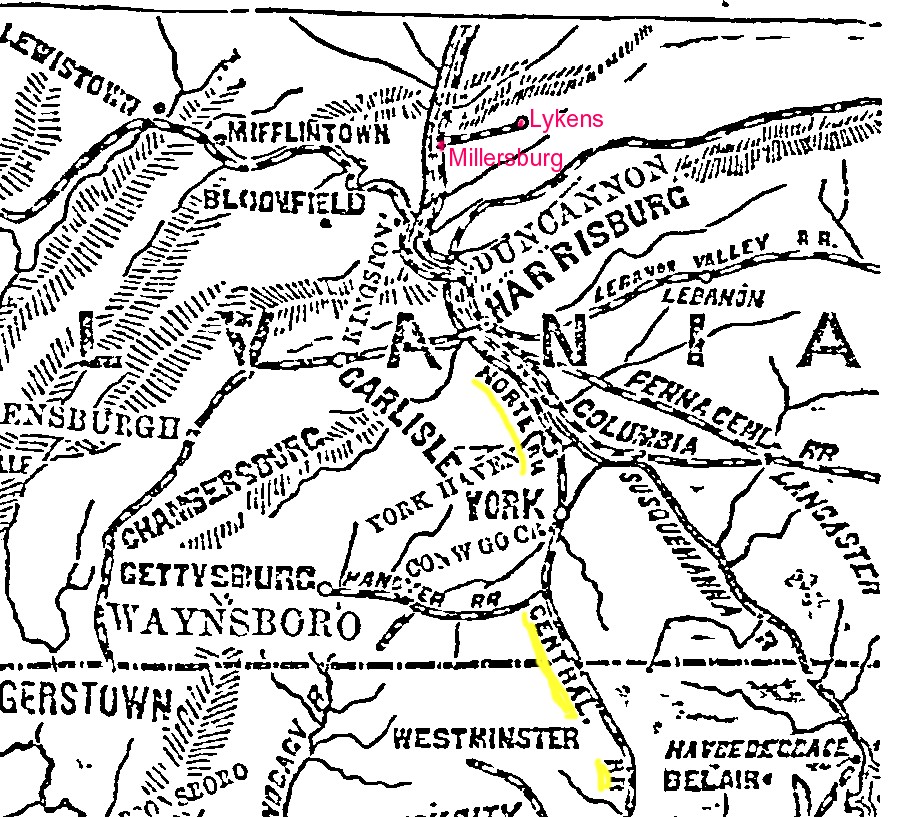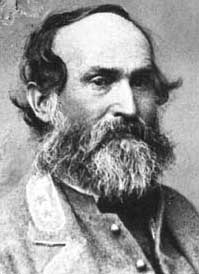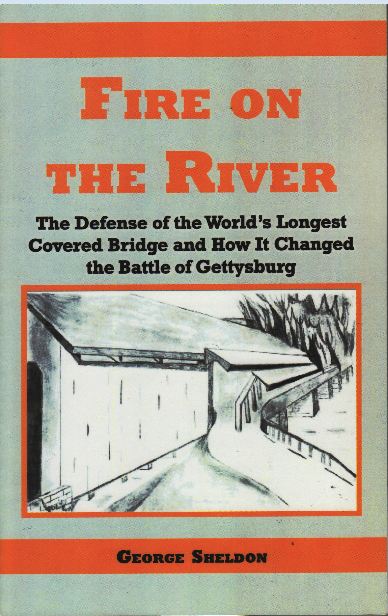Columbia-Wrightsville Bridge – Flames on the Susquehanna
Posted By Norman Gasbarro on April 23, 2011
A recent book donation to the Gratz Historical Society has helped renew interest in a well-known event that took place on the Susquehanna River just south of Harrisburg in the crucial days preceding the Battle of Gettysburg in June, 1863. Flames Across the Susquehanna is a novel by Glenn Banner and is based on the burning of the Columbia-Wrightsville Bridge, a crucial east-west railroad link connecting with the Northern Central Railroad which was the major north-south route by which Civil War transport movements took place between Baltimore, Maryland, and points north into New York State.
One previous post on this blog, Naked Man Visits Rebs on Rapidan, told of Confederate General John Brown Gordon‘s attempts to save the town of Wrightsville on the western bank of the Susquehanna:
During the campaign for Gettysburg, Gen. Gordon’s men reached the farthest east on the Susquehanna River that the Confederates would go –to Wrightsville – and is credited for saving the town from fire after retreating Unionists set fire to a bridge to prevent Gordon’s advance, but the fire accidentally spread to the town. Gordon ordered a bucket brigade to save the town.
If fire had not been set to the bridge, or if Gordon’s men had been successful in dousing the flames, it is entirely possible that the Confederates would have had a clear, undefended path to Harrisburg and up into the rich coal fields of the Lykens Valley and Schuylkill County.
The bridge burned on Sunday, 28 June 1863 and the Philadelphia Inquirer headlines of the next morning told the story:
A map covering the entire center part of the first page showed how close the rebels were to the Lykens Valley area.
Lykens and Millersburg are added to the above map in red. Also shown on the map is the route of the Northern Central Railroad, the location of Gettysburg, York, Columbia and Harrisburg.
The bridge between Wrightsville and Columbia was actually the second bridge across the Susquehanna River at that location. Completed in 1834 at a cost of about $157,000, it is further described in an article on Wikipedia:
It was 5,620 feet (1,710 m) long and 28 feet (8.5 m) wide and also enjoyed the distinction of being the world’s longest covered bridge. The wood and stone structure had 27 piers, a carriageway, walkway, and two towpaths to guide canal traffic across the river. Tolls were $1.00 for a wagon and 6 horses (equal to $21.93 today), and 6 cents per pedestrian (equal to $1.316 today). Much of the mostly oak timber used in its construction was salvaged from the previous bridge. Its roof was covered with shingles, its sides with weatherboard, and its interior was whitewashed. The structure was modified in 1840 by the Canal Company at a cost of $40,000 (equal to $877,067 today) concurrent with the construction of the Wrightsville Dam. Towpaths of different levels and with sidewalls were added to prevent horses from falling into river, as happened several times when the river flooded. The roof of the lower path formed the floor of upper path. In this way, canal boats were towed across the river from the Pennsylvania Canal on the Columbia side to the Susquehanna and Tidewater Canal at Wrightsville. Sometime after 1846, a double-track railway was added, linking the Philadelphia and Columbia Railroad to the Northern Central Railway. Due to fear of fire caused by locomotives, rail cars were pulled across the bridge by teams of mules or horses.
In the early days of the Gettysburg Campaign, Maj. Granville Owen Haller was in charge of the defense of southeastern Pennsylvania. After the Battle of Fredericksburg, Haller and Col. Jacob G. Frick moved into the area of Wrightsville and Columbia and planned to mine the bridge and then detonate the mines in order to prevent the advance of the Confederates. After detonation, the timbers remained in place and the bridge was still passable. As the Confederates surged onto the bridge, Union men set fire to it close to the Wrightsville side. In order to insure that the fire would spread, they had previously saturated it with oil obtained from a Columbia refinery. What the denotated charges were unable to do, the rapidly spreading fire was able to accomplish. The winds pushed the fire toward the town of Wrightsville. The bucket brigade organized by Gen. Brown saved the town, but it was too late to save the bridge. In six hours, the world’s longest covered bridge lay in ruins.
Interestingly, it was Confederate Gen. Robert E. Lee who had first ordered the bridge burned. Disobeying Lee’s orders, Confederate General Jubal Early and Gen. Gordon Brown had instead decided to save it, perhaps recognizing its strategic value should the rebels be able to cross it successfully.
An excellent resource for the further study of this incident is Flames Beyond Gettysburg by Scott L. Mingus, Sr., published by Savas Beatie (New York) in 2011. The book is illustrated, extensively footnoted, has a comprehensive bibliography, and several appendices. One of the appendices features driving tours of historical interest to the Wrightsville-Columbia Bridge Incident.
Another resource is Fire on the River by George Sheldon. Sheldon’s book was published by Quaker Hills Press (Lancaster, Pennsylvania) in 2006. There is a short bibliography. It’s a good, quick-read for someone wanting an overview of the events surrounding the burning of the bridge.
Map and headlines are from the on-line resources of the Free Library of Philadelphia. Portraits of Maj. Haller and Gen. Early are from Wikipedia and are in the public domain because their copyright has expired.
 ;
;









Thank you very much for the comments about my book, Flames Beyond Gettysburg. It has been selling well and is regarded as the most detailed account of the Confederate expedition that resulted in the destruction of the Columbia Bridge by retreating Union militia.
In regards to the black militia, who are they, (made up of) and where are they from. Did they set the fire to the bridge? The individual who was responsible for the explosives he to was also black and was he a local? What happened to the retreating miltia? Did they later join the troops for a battle? I am interested in using your book and your personal research for a novel I am currently writing. This is the first I’ve heard of your book, I will be Library bound and/ or bookstore bound. Interested in hearing back from you, Thank you.
R-
Interested in documents of construction and names of workers during construction of this bridge.